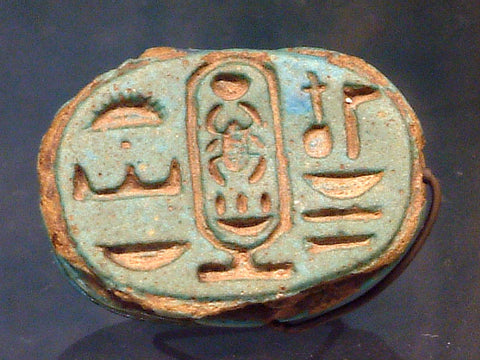Evidence shows that signet rings have been a tradition from as far back as early 1400BC!
Throughout history, they were used as useful tools, identifiers, and at times, as a form of signature. Signet rings have for many years, provided their wearers with status and function, and are equally as popular these days.
What Exactly Is A Signet Ring?
Also referred to as seal rings, the name “signet” originated from the Latin word “signum,” which in English, means “sign.” Normally consisting of a flat bezel, these rings have crests or signs engraved onto their surfaces. The engravings are traditional, family coats of arms or crests from families of high standing.

The engravings on signet rings had two purposes. One was to indicate identity and status, and the other, was when the flat top, with its crest or coat of arms, was pressed into seals of wax or clay, thus leaving an imprint of the design. This imprint was an important type of authentication since the seal on a signet ring wasn’t easy to duplicate and was therefore, a primary mark of signature during those times, when many people were unable to write.
Signet Rings In Different Countries And Eras
Ancient Egypt – signet rings were discovered in many tombs of Ancient Egypt. The Egyptians used various materials to make signet rings, including amethyst, rock crystal, steatite, and of course, gold. The designs in those days were simple and conservative, with one such fine example being found in the tomb of Huy, Viceroy of Nubia, during Tutankhamun’s reign, from 1337 to 1327 BC, and were used mainly for administration purposes.
Greece – signet rings with metal bezels of silver, gold, and bronze appeared in Greece around 600 BC. These were frequently engraved with miniatures of Greek art and sculpture, as well as images of nature. The bezel of Greek rings became broader in shape up to the 5th century when its shape became almost circular. The signet rings of the Hellenic period, from 331 to 227 BC, sometimes included precious stones like cornelian and sandstone in their settings.
The signet ring travelled from Greece to Etruria where it became equally as popular.

Rome – signet rings also played an important part in Roman culture. All through that period, the ring progressed from iron to silver and gold, as the empire became wealthier. Signet rings also became larger over the years and were set with more precious stones.
Gnaios, a famous artist of that time, engraved historical and mythological scenes into the rings, which gave them symbolic meaning.

Emperor Tiberius, just like Alexander, ordered a ring engraved with his own portrait on its surface.

Signet rings moved away from their traditional use during this time and were used to depict stories, favourite sports, loved ones, as well as public figures. Some men, during the Roman period, even went so far as to have pornographic scenes or nude women engraved into their rings, to remind them of their mistresses!
The shoulders of rings contained further engravings to extend the design.
The Byzantium Period – Christian imagery and symbols were used during the Byzantium period and included monograms of Christ, the lamb, saints, and virgins, engraved into signet rings. Words replaced the emphasis on figures, and the demand for signet rings was huge, which prompted goldsmiths to start stocking up on standard designs, in readiness for the expected flood of orders.

The Middle Ages – signet rings, in medieval times, were used primarily to sign and seal letters, with recognisable seals authenticating messages. Owner’s names or messages were inscribed on the bezel of early medieval rings, including the Latin meaning of “hide what is read,” or “read what is written,” to indicate letters that were private and confidential.
Heraldry also became increasingly popular, with crests and arms being more frequently engraved on signet rings. For lower class citizens, who did not have arms or family crests, the trade tools of the merchant would be engraved into the bezel instead. For instance, some scissors for a tailor, or a hammer for a mason, as well as the initials of the maker, would be engraved on the ring.
Renaissance – although some signet rings during this time, contained carvings of contemporary rulers, many rings were kept and venerated as heirlooms from previous family members. Bloodstone was frequently used as the hardstone for engraving, when new signet rings with heraldic symbols were made, because the red specks in the stone were seen to symbolise blood, and therefore ancestry.
Merchant signet rings during this time, became less elaborate and more practical, while rings with initials became more ornamental, with intricate shoulders, and often included floral motifs. A new tradition came about during these years, where the two initials of the recently married couple, were entwined. There were times too when initials were added to heraldic crests on signet rings.
The 18th Century – this is when there was a change in the way signet rings were used and viewed. The interest in ancient Roman and Greek cultures also resulted in an increase in engravings again, of much-loved public figures of that time, such as royals, philosophers, and rulers.
The 19th Century – fascination for classicism became nostalgia for the medieval and renaissance periods, and, together with the romantic movements in literature and art, there was an abundance of romantic jewellery. The signet ring, in the meantime, continued being used as a wax seal.
In Conclusion
Although glue-sealed envelopes have replaced the main function of the signet rings of days gone by, it is still considered to be the mark of a gentleman, indicating status. Although prominent military figures wear signet rings, as do freemasons, they can be worn and enjoyed by both men and women from all walks of life these days.
You can browse our fine collection of signet rings from across the ages here.
You may also like The Love Of Animal Jewellery



